Abstract
OBJECTIVES. This article examines health policy implications of providing smokers with numerical tar yield information in cigarette advertising. METHODS. Results of a national probability telephone survey regarding smokers' knowledge and understanding of numerical tar yields and deliveries are reported. RESULTS. Few smokers knew the tar level of their own cigarettes (the exception being smokers of 1- to 5-mg tar cigarettes), and a majority could not correctly judge the relative tar levels of cigarettes. Smokers were unsure whether switching to lower-tar cigarettes would reduce their personal health risks. Many smokers relied on absolute numbers in making trade-offs between number of cigarettes smoked and their tar levels, thus confusion machine-rated tar-yields with actual amounts ingested. CONCLUSIONS. The wisdom of the present method of providing tar and nicotine numbers in ads and recommendations for modifying the test protocol are now under discussion. This research indicates that these tar numbers and their implications are poorly understood. The paper recommends revisions in tar ratings to make them more useful and a required statement on cigarette packages to more explicitly relate tar levels to major health risks.
Full text
PDF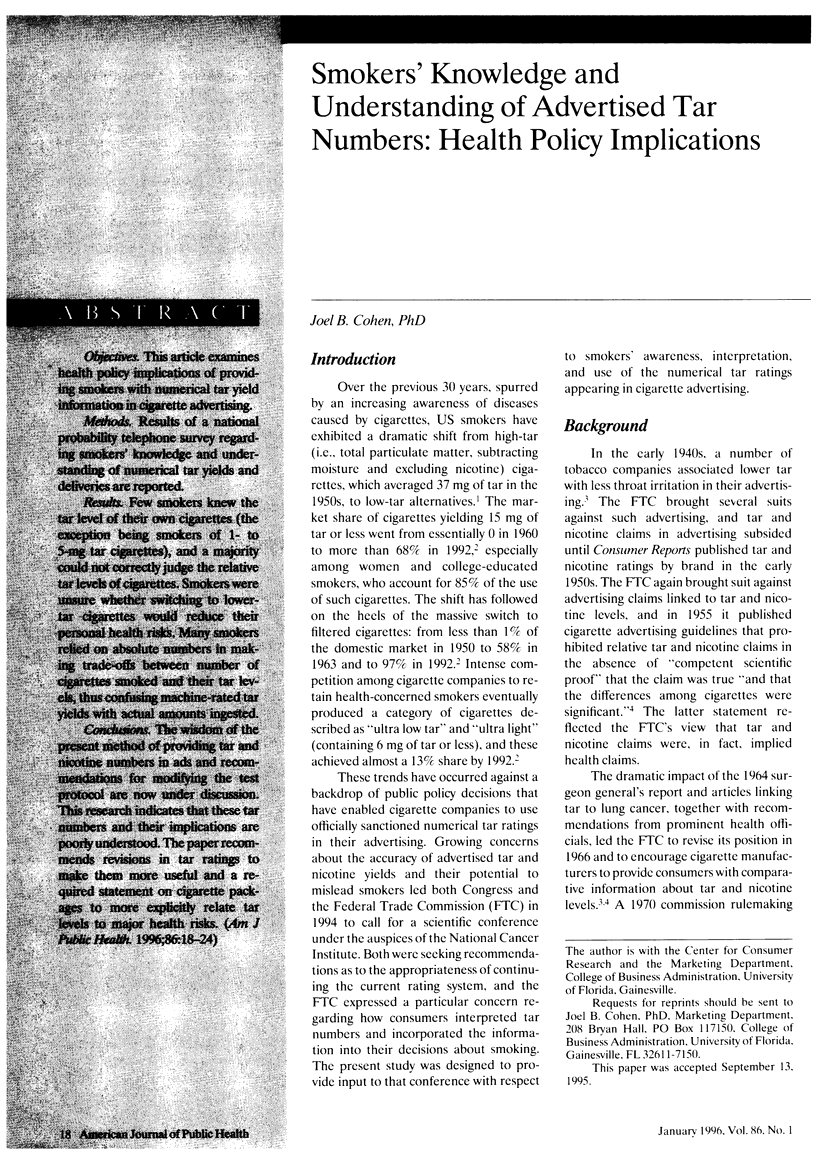
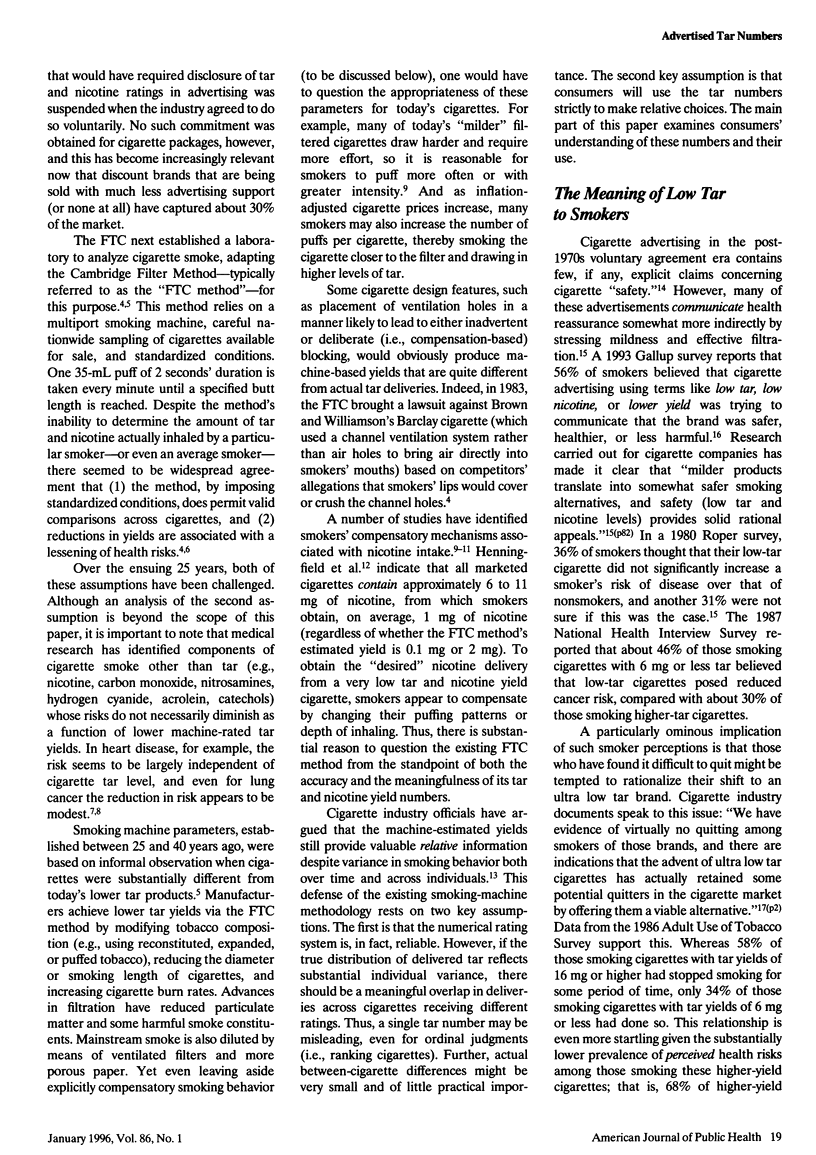
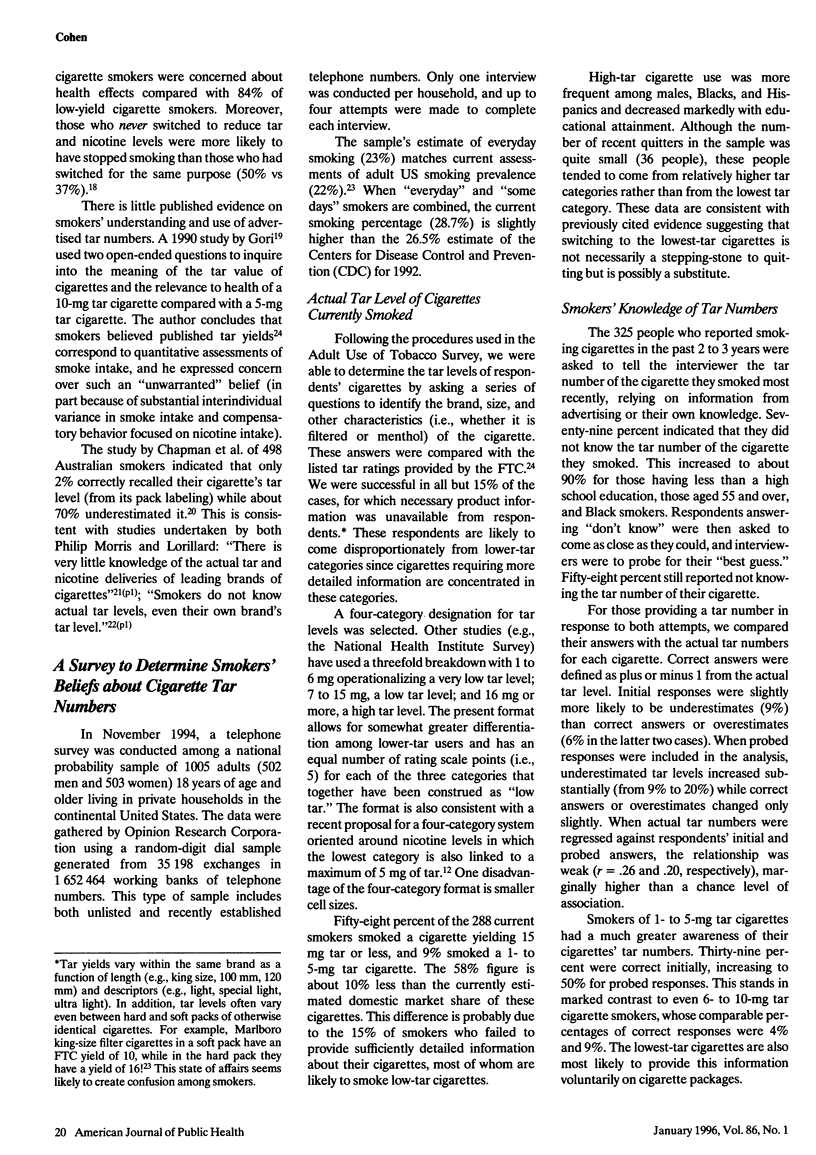
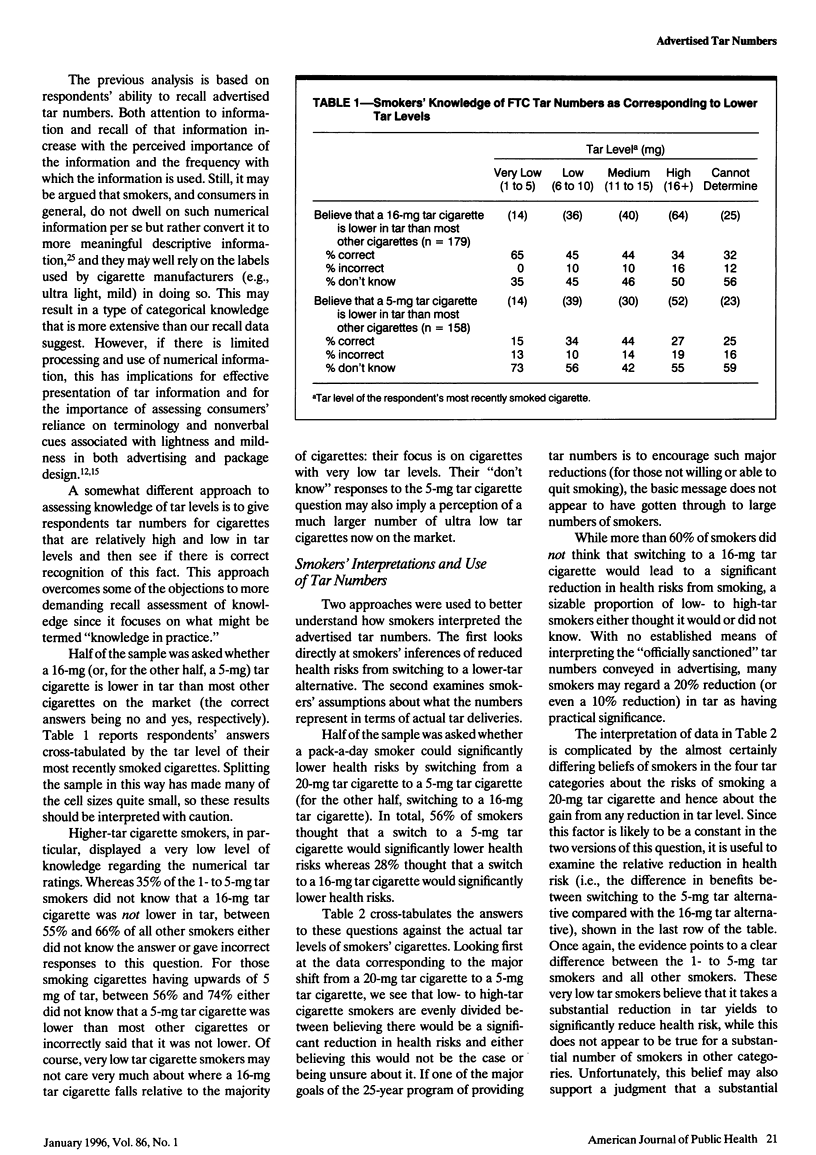
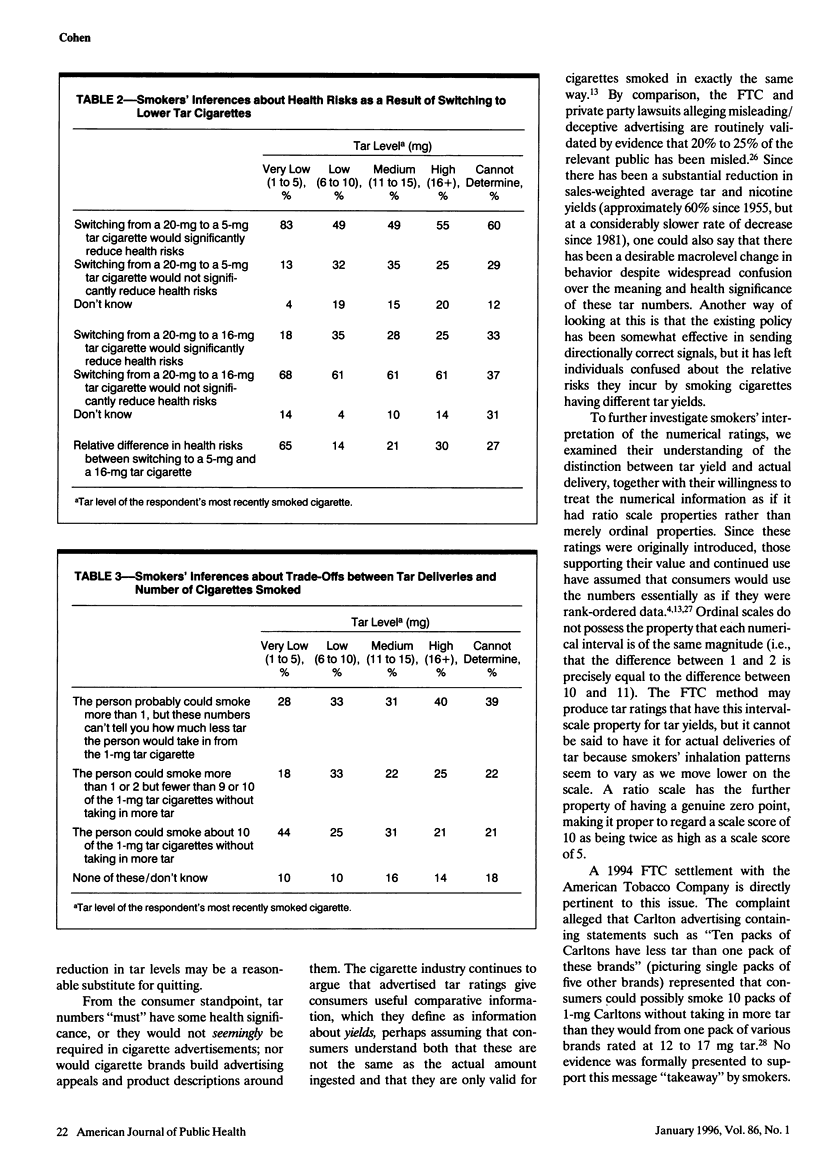
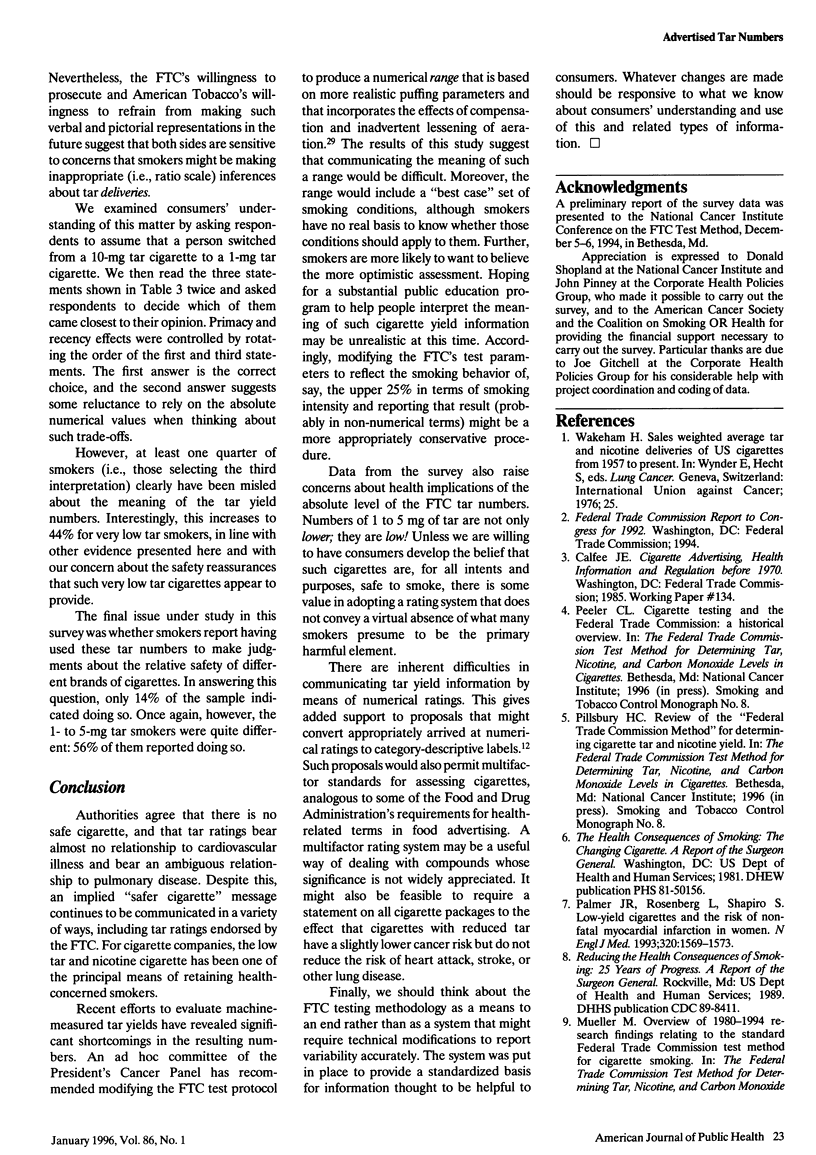
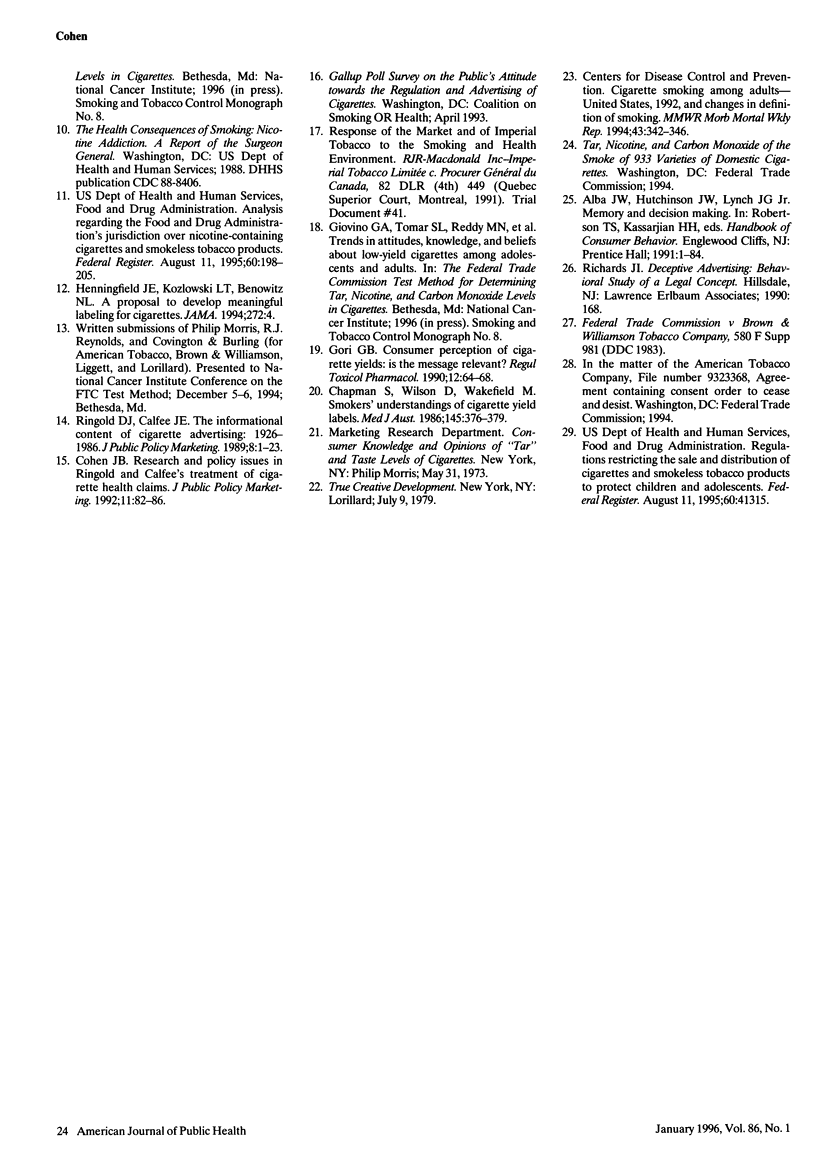
Selected References
These references are in PubMed. This may not be the complete list of references from this article.
- Chapman S., Wilson D., Wakefield M. Smokers' understandings of cigarette yield labels. Med J Aust. 1986 Oct 20;145(8):376–379. doi: 10.5694/j.1326-5377.1986.tb112389.x. [DOI] [PubMed] [Google Scholar]
- Gori G. B. Consumer perception of cigarette yields: is the message relevant? Regul Toxicol Pharmacol. 1990 Aug;12(1):64–68. doi: 10.1016/s0273-2300(05)80047-9. [DOI] [PubMed] [Google Scholar]
- Palmer J. R., Rosenberg L., Shapiro S. "Low yield" cigarettes and the risk of nonfatal myocardial infarction in women. N Engl J Med. 1989 Jun 15;320(24):1569–1573. doi: 10.1056/NEJM198906153202401. [DOI] [PubMed] [Google Scholar]


